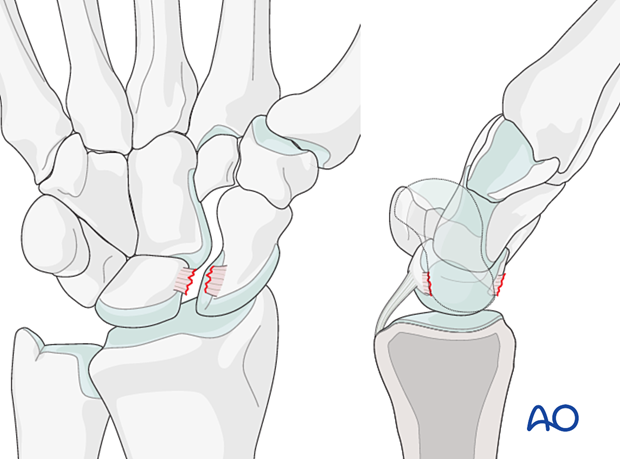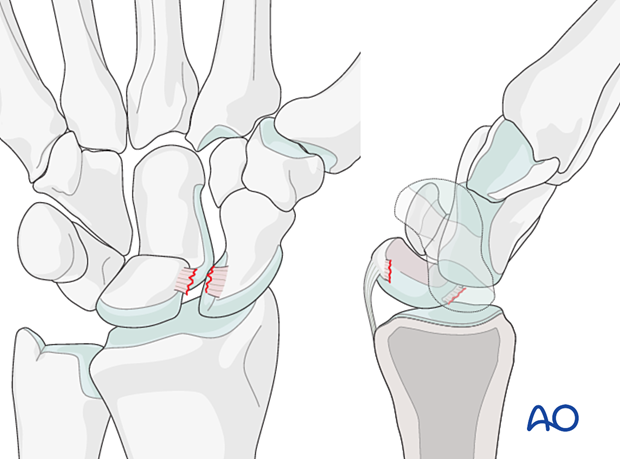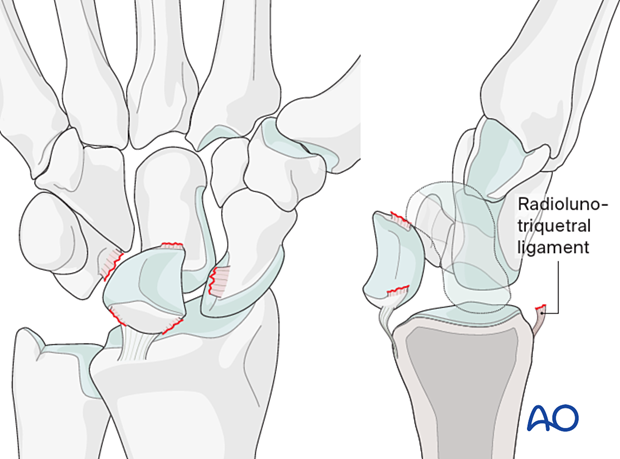Perilunate injury classification
Introduction
The progression of ligamentous damage and the sequence of injuries that can occur in a perilunate dislocation were investigated by Mayfield and colleagues in anatomical specimen experimentation. Their findings confirmed that most carpal dislocations around the lunate result from a similar pathomechanical event, the so-called progressive perilunate instability. The four types (or stages) of carpal destabilization were identified as follows:
- Stage I: Scapholunate dissociation
- Stage II: Lunocapitate dislocation, also known as perilunate dislocation
- Stage III: Midcarpal dislocation
- Stage IV: Lunate dislocation
- Mayfield JK, Johnson RP, Kilcoyne RK. Carpal dislocations: pathomechanics and progressive perilunar instability. J Hand Surg Am. 1980 May;5(3):226–241.
Stage I: scapholunate ligament injury
A scapholunate dissociation involves tearing of the scapholunate ligaments (dorsal, interosseous, and palmar). Sometimes, there are also further ligament disruptions, eg, the scaphotrapezial ligaments.

Stage II: lunocapitate dislocation
Lunocapitate dislocation (aka perilunate dislocation) involves a progressive range (including scapholunate and lunocapitate) of ligament ruptures. Usually, the lunate remains aligned normally with the distal radius, but the surrounding carpal bones are displaced. The lunocapitate joint becomes disrupted.
In stage II, the capitate and scaphoid remain together and dissociate from the lunate and triquetrum. The resulting rupture in the carpal joint capsule creates a gap in the space of Poirier.

Stage III: midcarpal dislocation
As the disruption progresses through the carpus, midcarpal dislocation occurs. At this point, the lunate and capitate have lost alignment with the distal radius. The lunotriquetral ligament is ruptured and/or a partial avulsion of the triquetral bone occurs.

Stage IV: lunate dislocation
As the disruption progresses further through the carpus, lunate dislocation occurs. At this point, the lunate is dislocated and the dorsal radiolunate ligament is ruptured. The unique teacup appearance of the lunate and the extreme angle that can result in this injury creates what is known as the spilled teacup sign.














